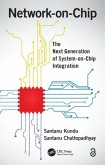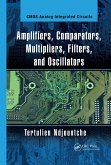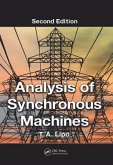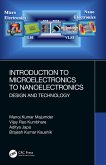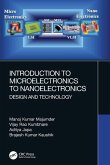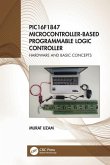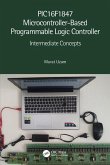CMOS: Front-End Electronics for Radiation Sensors offers a comprehensive introduction to integrated front-end electronics for radiation detectors, focusing on devices that capture individual particles or photons and are used in nuclear and high energy physics, space instrumentation, medical physics, homeland security, and related fields.
Emphasizing practical design and implementation, this book:
Covers the fundamental principles of signal processing for radiation detectorsDiscusses the relevant analog building blocks used in the front-end electronicsEmploys systematically weak and moderate inversion regimes in circuit analysisMakes complex topics such as noise and circuit-weighting functions more accessibleIncludes numerical examples where appropriate
CMOS: Front-End Electronics for Radiation Sensors provides specialized knowledge previously obtained only through the study of multiple technical and scientific papers. It is an ideal text for students of physics and electronics engineering, as well as a useful reference for experienced practitioners.
Emphasizing practical design and implementation, this book:
Covers the fundamental principles of signal processing for radiation detectorsDiscusses the relevant analog building blocks used in the front-end electronicsEmploys systematically weak and moderate inversion regimes in circuit analysisMakes complex topics such as noise and circuit-weighting functions more accessibleIncludes numerical examples where appropriate
CMOS: Front-End Electronics for Radiation Sensors provides specialized knowledge previously obtained only through the study of multiple technical and scientific papers. It is an ideal text for students of physics and electronics engineering, as well as a useful reference for experienced practitioners.
"... an essential resource for whoever is involved with radiation sensors from the circuit design perspective. It nicely covers all topics of practical interest, gradually leading from general concepts to specific aspects and bringing several interesting examples. The author was able to effectively transfer his wide knowledge and experience, both as a researcher and as an educator, into this amazing piece of work. The book can lead newcomers to rapidly learn how to address the analysis and design of front-end circuits, but it is also suitable for experts to refresh some important concepts without the need to go through many scientific papers."
-Gian-Franco Dalla Betta, University of Trento, Italy
"... a well-organized, clear, and comprehensive guide to the design of low-noise front-end electronics for sensors. An ideal introduction for beginners and students, and a valuable reference for experienced designers."
-Gianluigi De Geronimo, Brookhaven National Laboratory, Upton, New York, USA and Stony Brook University, New York, USA
"Reflecting the author's extensive experience, the book covers the design and implementation of the front-end electronics optimized for the amplification, conditioning, and digitization of signals in radiation sensors. This body of knowledge, developed along many decades within the high energy and nuclear physics communities, was dispersed in many specialized articles. Now it is collected, summarized, and enriched in an impressive book of about 700 pages, which covers both the theoretical background and many implementation practical aspects. This is the book that many people in the field were waiting for."
-Joao Varela, Laboratory of Instrumentation and Experimental Particles Physics, Lisbon, Portugal and Instituto Superior Técnico, University of Lisbon, Portugal
-Gian-Franco Dalla Betta, University of Trento, Italy
"... a well-organized, clear, and comprehensive guide to the design of low-noise front-end electronics for sensors. An ideal introduction for beginners and students, and a valuable reference for experienced designers."
-Gianluigi De Geronimo, Brookhaven National Laboratory, Upton, New York, USA and Stony Brook University, New York, USA
"Reflecting the author's extensive experience, the book covers the design and implementation of the front-end electronics optimized for the amplification, conditioning, and digitization of signals in radiation sensors. This body of knowledge, developed along many decades within the high energy and nuclear physics communities, was dispersed in many specialized articles. Now it is collected, summarized, and enriched in an impressive book of about 700 pages, which covers both the theoretical background and many implementation practical aspects. This is the book that many people in the field were waiting for."
-Joao Varela, Laboratory of Instrumentation and Experimental Particles Physics, Lisbon, Portugal and Instituto Superior Técnico, University of Lisbon, Portugal


